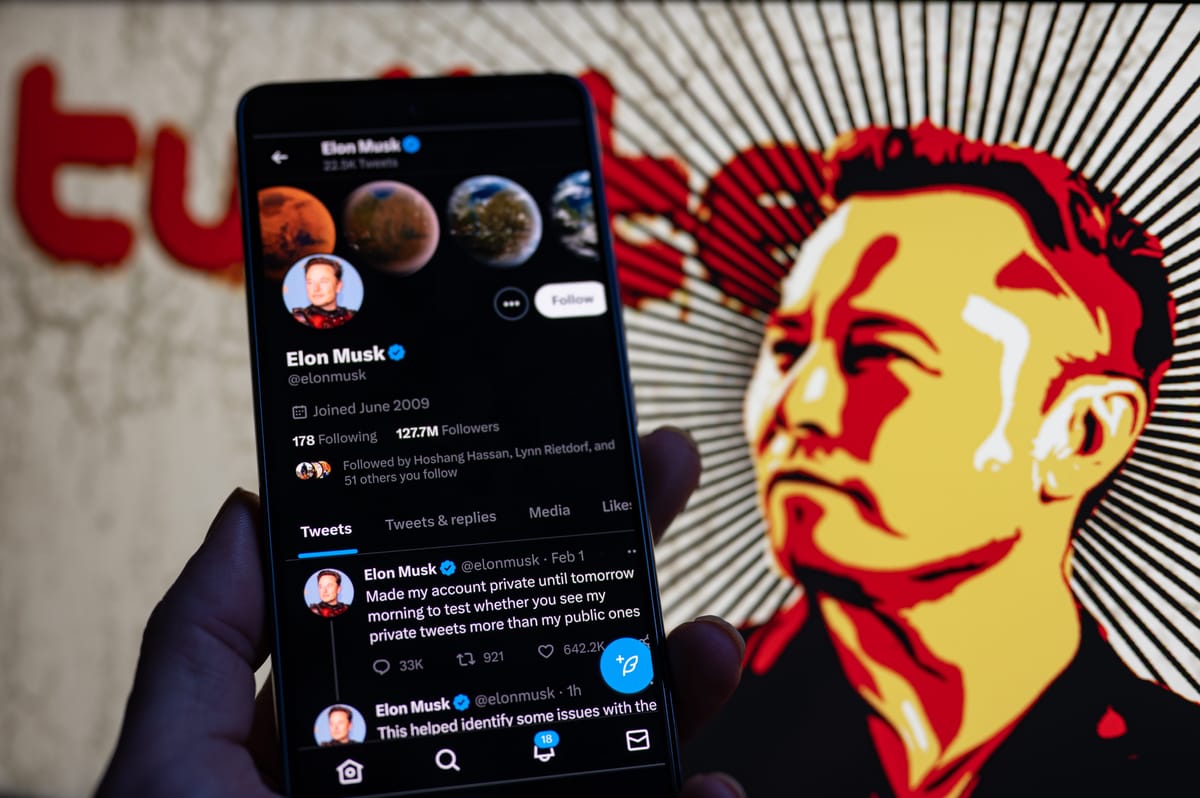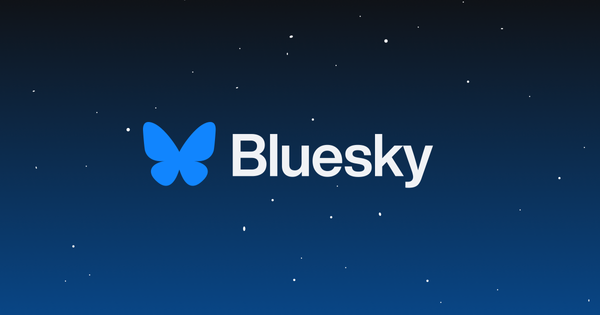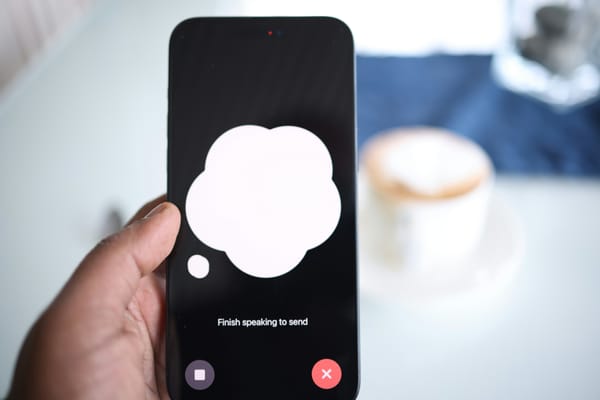Yes, Elon Musk created a special system for showing you all his tweets first
After his Super Bowl tweet did worse numbers than President Biden’s, Twitter’s CEO ordered major changes to the algorithm

This story is based on interviews with people familiar with the events involved and supported by documents obtained by Platformer.
At 2:36 on Monday morning, James Musk sent an urgent message to Twitter engineers.
“We are debugging an issue with engagement across the platform,” wrote Musk, a cousin of the Twitter CEO, tagging “@here” in Slack to ensure that anyone online would see it. “Any people who can make dashboards and write software please can you help solve this problem. This is high urgency. If you are willing to help out please thumbs up this post.”
When bleary-eyed engineers began to log on to their laptops, the nature of the emergency became clear: Elon Musk’s tweet about the Super Bowl got less engagement than President Joe Biden’s.
Biden’s tweet, in which he said he would be supporting his wife in rooting for the Philadelphia Eagles, generated nearly 29 million impressions. Musk, who also tweeted his support for the Eagles, generated a little more than 9.1 million impressions before deleting the tweet in apparent frustration.
In the wake of those losses — the Eagles to the Kansas City Chiefs, and Musk to the president of the United States — Twitter’s CEO flew his private jet back to the Bay Area on Sunday night to demand answers from his team.
Within a day, the consequences of that meeting would reverberate around the world, as Twitter users opened the app to find that Musk’s posts overwhelmed their ranked timeline. This was no accident, Platformer can confirm: after Musk threatened to fire his remaining engineers, they built a system designed to ensure that Musk — and Musk alone — benefits from previously unheard-of promotion of his tweets to the entire user base.
In recent weeks, Musk has been obsessed with the amount of engagement his posts are receiving. Last week, Platformer broke the news that he fired one of two remaining principal engineers at the company after the engineer told him that views on his tweets are declining in part because interest in Musk has declined in general.
His deputies told the rest of the engineering team this weekend that if the engagement issue wasn’t “fixed,” they would all lose their jobs as well.
Late Sunday night, Musk addressed his team in-person. Roughly 80 people were pulled in to work on the project, which had quickly become priority number one at the company. Employees worked through the night investigating various hypotheses about why Musk’s tweets weren’t reaching as many people as he thought they should and testing out possible solutions.
One possibility, engineers said, was that Musk’s reach might have been reduced because he’d been blocked and muted by so many people in recent months. Even before the events of this weekend, Musk’s long stint as Twitter’s main character, both in the run-up to and aftermath of his $44 billion takeover of the company, had led huge numbers of people to filter him out of their feeds.
But there were also legitimate technical reasons the CEO’s tweets weren’t performing. Twitter’s system has historically promoted tweets from users whose posts perform better to both followers and non-followers in the For You Tab; Musk’s tweets should have fit that model but showed up less only about half the time that some engineers thought they should, according to some internal estimates.
By Monday afternoon, “the problem” had been “fixed.” Twitter deployed code to automatically “greenlight” all of Musk’s tweets, meaning his tweets will bypass Twitter’s filters designed to show people the best content possible. The algorithm now artificially boosted Musk’s tweets by a factor of 1,000 – a constant score that ensured his tweets rank higher than anyone else’s in the feed.
Internally, this is called a “power user multiplier,” although it only applies to Elon Musk, we’re told. The code also allows Musk’s account to bypass Twitter heuristics that would otherwise prevent a single account from flooding the core ranked feed, now known as “For You.”
That explains why people opening the app Monday found that Musk dominated the feed, with a dozen or more Musk tweets and replies visible to anyone who followed him and millions more who did not. Over 90 percent of Musk’s followers now see his tweets, according to one internal estimate.
Musk acknowledged his bombardment of the timeline on Tuesday afternoon, posting a version of the popular “forced to drink milk” meme in which one woman labeled “Elon’s tweets” forcibly bottle-feeds another woman labeled “Twitter” while pulling her hair back.
Some of his tweets Monday were sent while he was on calls with Twitter engineers, to test out whether the solutions they’d designed were working as well as he thought they should.
After Musk’s timeline takeover caused an uproar Monday, he seemed to suggest that the changes would be walked back, at least in part. “Please stay tuned while we make adjustments to the uh .… “algorithm,” he tweeted.
The artificial boosts applied to his account remain in place, although the factor is now lower than 1,000, we’re told. Musk’s handful of tweets Tuesday reported around 43 million impressions, which are on the high end of his recent average.
Absurd as Musk’s antics are, they do highlight a tension familiar to almost anyone who has ever used a social network: why are some posts more popular than others? Why am I seeing this thing, and not that one?
Engineers for services like TikTok and Instagram can offer partial, high-level answers to these questions. But ranking algorithms make predictions based on hundreds or thousands of signals, and deliver posts to millions of users, making it almost impossible for anyone to say with any degree of accuracy who sees what.
For better and for worse, that answer hasn’t been good enough for Musk. As Twitter’s most prominent user, with nearly 129 million followers, his posts often get 10 million or more impressions, as counted by Twitter. (There are good reasons to doubt the accuracy of these counts, but better data is not readily available.)
But Musk’s view counts still fluctuate widely. The bottle-feeding tweet got a reported 118.4 million impressions; his next one, a joke observation previously posted to Reddit and satirically attributed to Abraham Lincoln, got 49.9 million. Some of his tweets from earlier this month had fewer than 8 million.
The most obvious reason for this discrepancy is that people think some tweets are better than others. But it doesn’t have to work like that: you could also change the ranking algorithms so that they show your posts no matter what.
Terrified of losing their jobs, this is the system that Twitter engineers are now building.
“He bought the company, made a point of showcasing what he believed was broken and manipulated under previous management, then turns around and manipulates the platform to force engagement on all users to hear only his voice,” said a current employee. “I think we’re past the point of believing that he actually wants what’s best for everyone here.”
Governing
- US regulators are taking a harder line on crypto and pushing banks to pull back on their crypto relationships in the wake of FTX’s collapse. (Yueqi Yang, Katanga Johnson and Austin Weinstein / Bloomberg)
- Eric Schmidt, former CEO of Google, is working as a link between Silicon Valley and the Pentagon as he backs an AI startup designing tools for the Department of Defense. (Will Knight / Wired)
- The Chinese government is an unofficial player in TikTok’s negotiations with US regulators, as ByteDance executives try to gauge how any agreement will play with Chinese officials. (Liza Lin and Raffaele Huang / Wall Street Journal)
- Prominent Chinese dissidents and activists say their visibility on Twitter has declined as the platform has become riddled with bugs and some have been suspended without warning. (Chang Che and Paul Mozur / New York Times)
- Apple’s efforts to expand its manufacturing business in India and pull back on its relationship with China have been slow due to logistics, tariffs, and infrastructure. (Patrick McGee and John Reed / Financial Times)
- The Modi administration keeps giving itself more control over Big Tech in India and the platforms are doing little to stop it. (Varsha Bansal / Wired)
Industry
- Google previewed Privacy Sandbox, its answer to Apple’s App Tracking Transparency. (Thomas Germain / Gizmodo)
- Instagram will shut down its live shopping feature in March following a similar sunset on Facebook. We’re getting really eager to read — or write — a definitive story about what went wrong with Meta and its big push into e-commerce. (Sarah Perez / TechCrunch)
- Meta updated the “Why am I seeing this ad?” feature on Facebook to include information about how the company uses machine learning to analyze users’ behavior on and off the platform to serve ads. (Nicole Farley / Search Engine Land)
- Andy Jassy says Amazon is doubling down on the company’s grocery store business despite slow growth. (Dave Lee / Financial Times)
- Spotify removed a clause that let Apple use human voices from Findaway Voices, an audiobook platform that it recently acquired, to train Apple’s machine-learning systems. (Shubham Agarwal / Wired)
- Twitter and other big companies are cutting Slack and Salesforce contracts, with the social platform slashing its Salesforce contract by 75%. (Kevin McLaughlin and Erin Woo / The Information)
- The NFT market been inching back up, with sales on the ethereum blockchain jumping from $546.9 million in December to $780.2 million in January. (Medha Singh / Reuters)
- BuzzFeed launched “infinity quizzes,” letting users build personalized narratives using technology from OpenAI. Selections include “Create Your Own Rom-Com,” “Generate a Break-Up Text,” and “Date Your Celebrity Crush.” (Ingrid Lunden / TechCrunch)
Those good tweets
For more good tweets every day, follow Casey’s Instagram stories.
saw a couple walking into trader joe’s and the girl said “wow look at all the pretty flowers” and the guy replied “oh yeah it must be flower season” please pray for him
— slate (@PleaseBeGneiss) 3:42 AM ∙ Feb 14, 2023
She's gonna love this
— neel (@neelsalami) 11:22 PM ∙ Feb 13, 2023
— internet hall of fame (@InternetH0F) 12:10 PM ∙ Feb 14, 2023
Tinder see who they're dating
— Soren Iverson (@soren_iverson) 3:01 PM ∙ Feb 14, 2023
Talk to us
Send us tips, comments, questions, and your preferred power user multiplier: casey@platformer.news and zoe@platformer.news.






